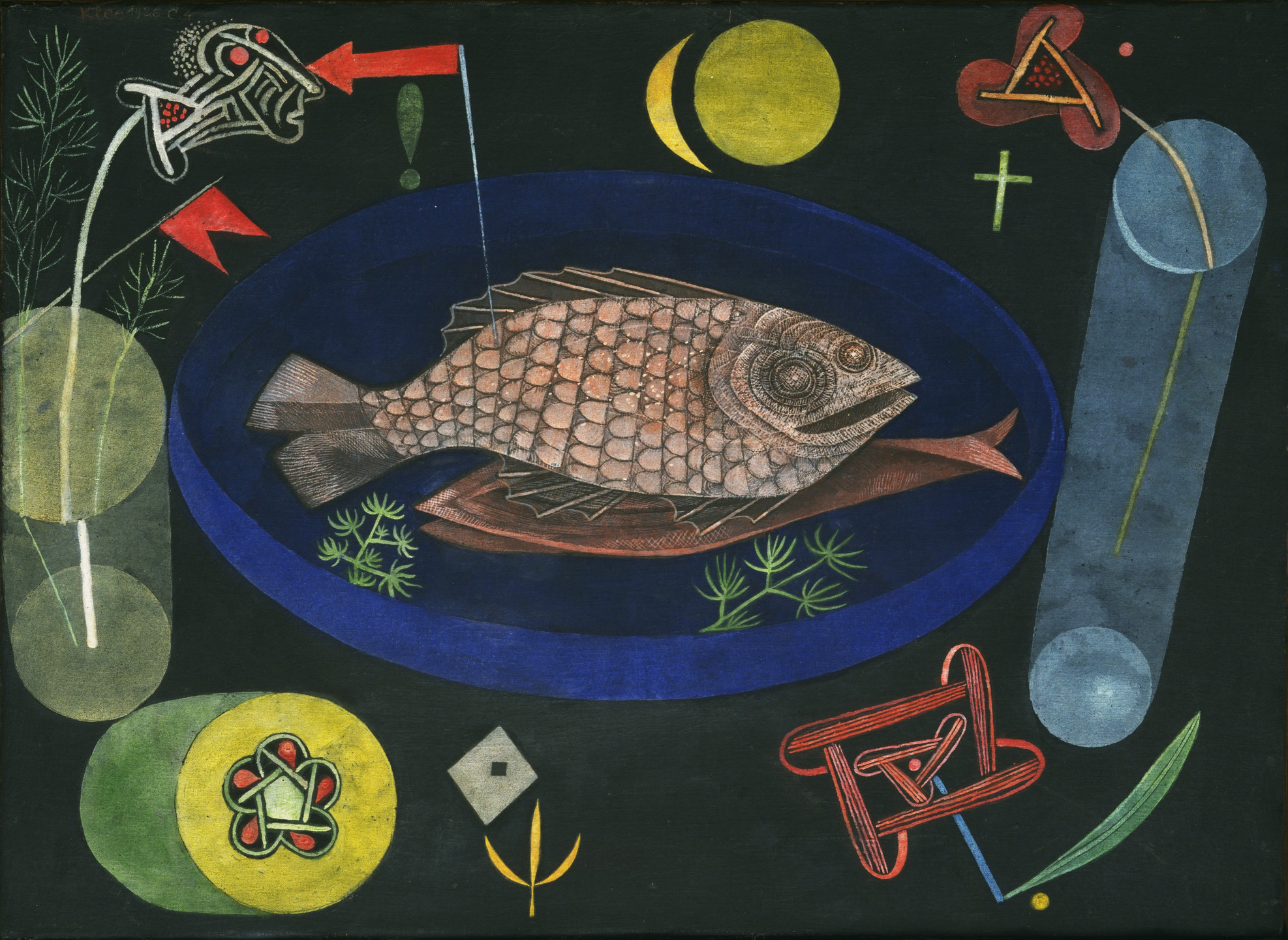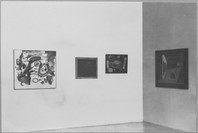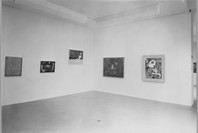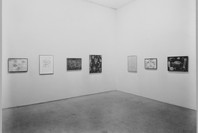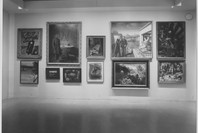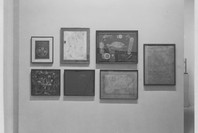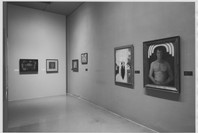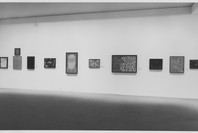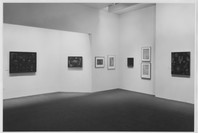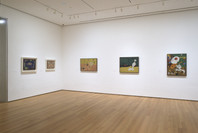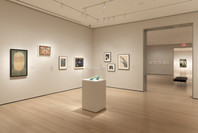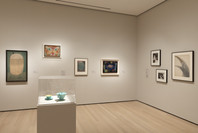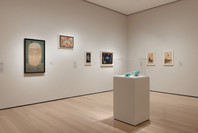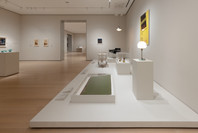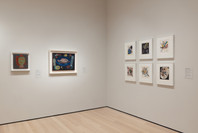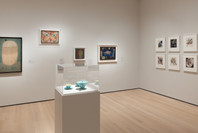Soon after the Nazis rose to power in 1933, Klee was suspended from his teaching position in Düsseldorf, leading him to return to his native Switzerland. This cryptic painting, in which a constellation of free-floating objects and symbols orbit an elaborately detailed fish, was among several of his works that the Nazi government included in their official “degenerate art” exhibitions and derided as childlike, disorderly, and confused. Yet it was precisely these qualities—the emulation of children’s art, the collage-like approach to building pictures, and the resistance to interpretation—that had attracted the Surrealists to Klee’s witty, lyrical artworks a decade earlier.
Gallery label from 2019
A garnished platter of fish is surrounded by a constellation of seemingly disparate elements—a cross, full and crescent moons, an exclamation point, a forked red flag—all hovering against a dark abyss. Some of Klee's iconography grew out of his teaching; the arrow, which he initially used as a teaching tool to indicate force and emotion for his students at the Bauhaus, here points confrontationally toward a stylized head, possibly alluding to human consciousness. Although they are often enigmatic, Klee believed his personal hieroglyphs and figurative elements had wide connotations: "The object grows beyond its appearance through our knowledge of its inner being, through the knowledge that the thing is more than its outward aspect suggests."
Gallery label from 2006.
